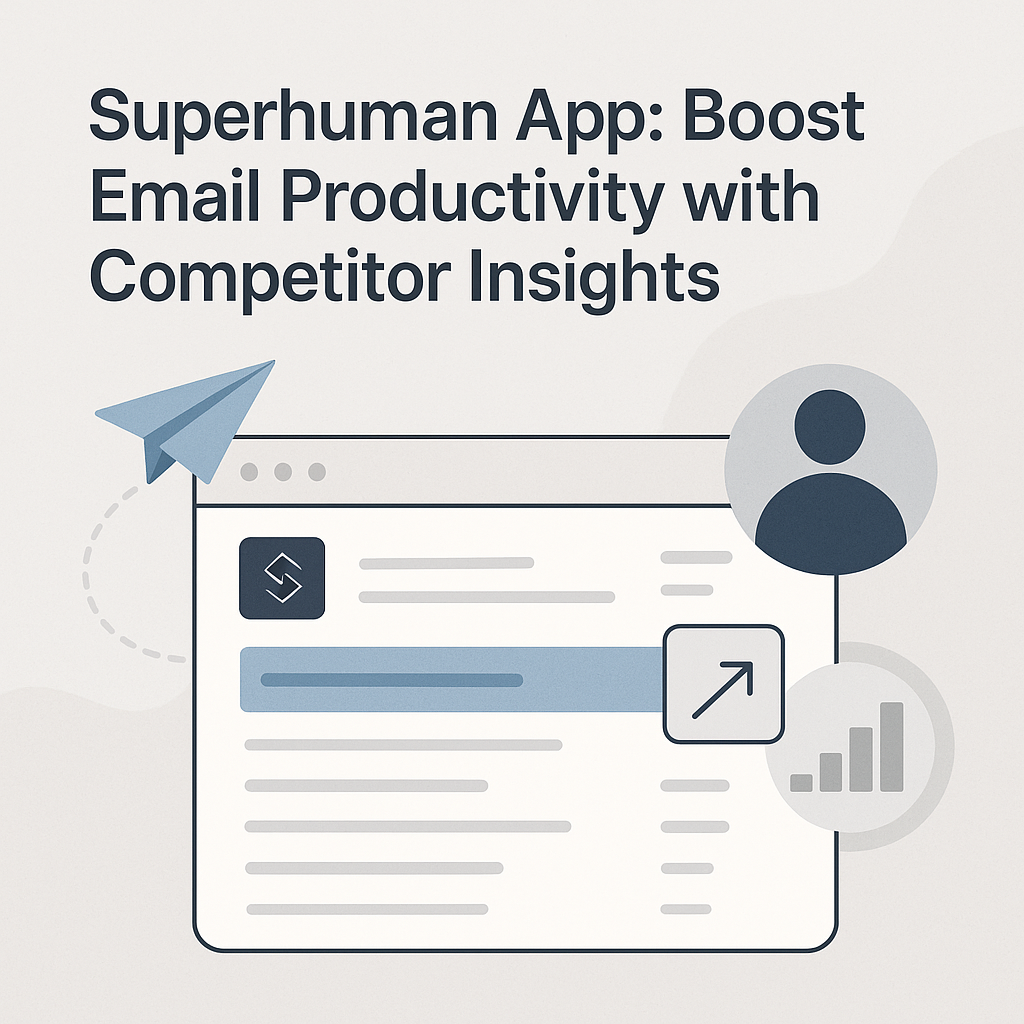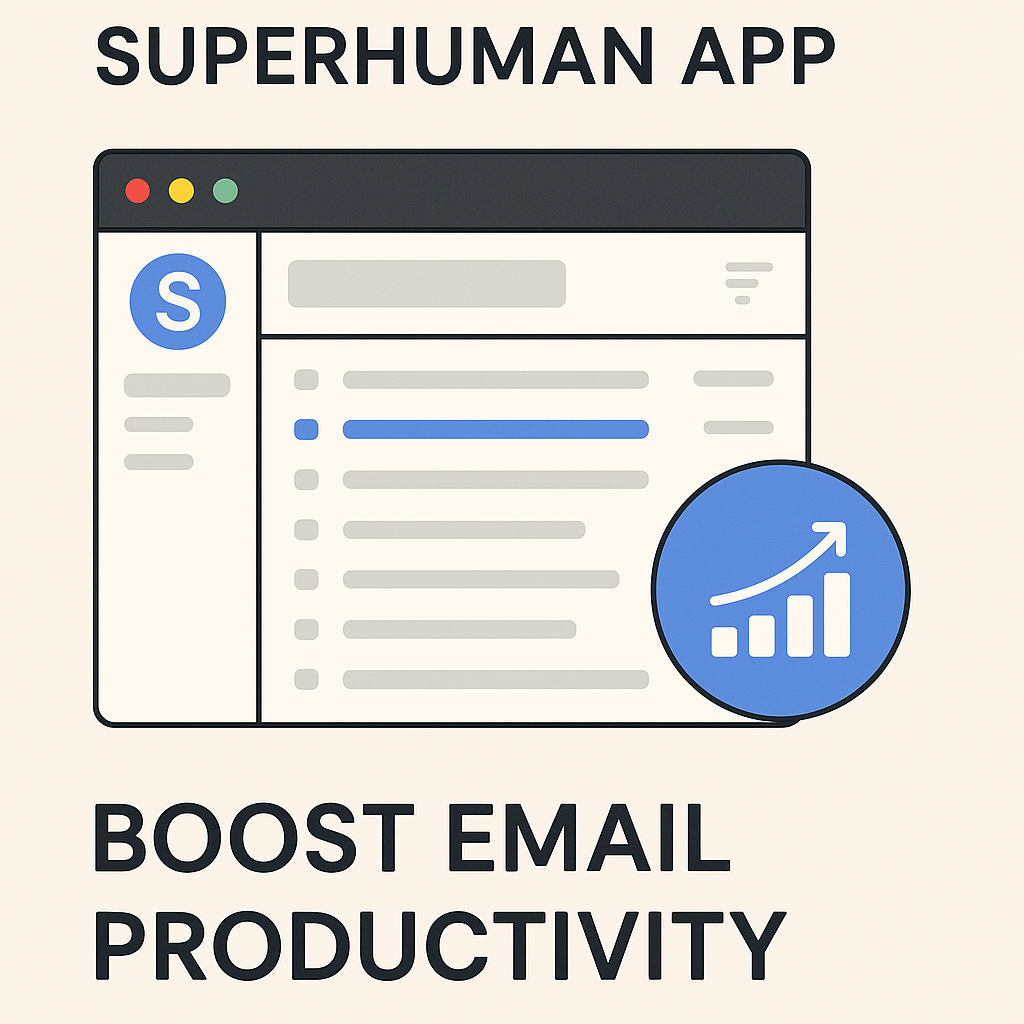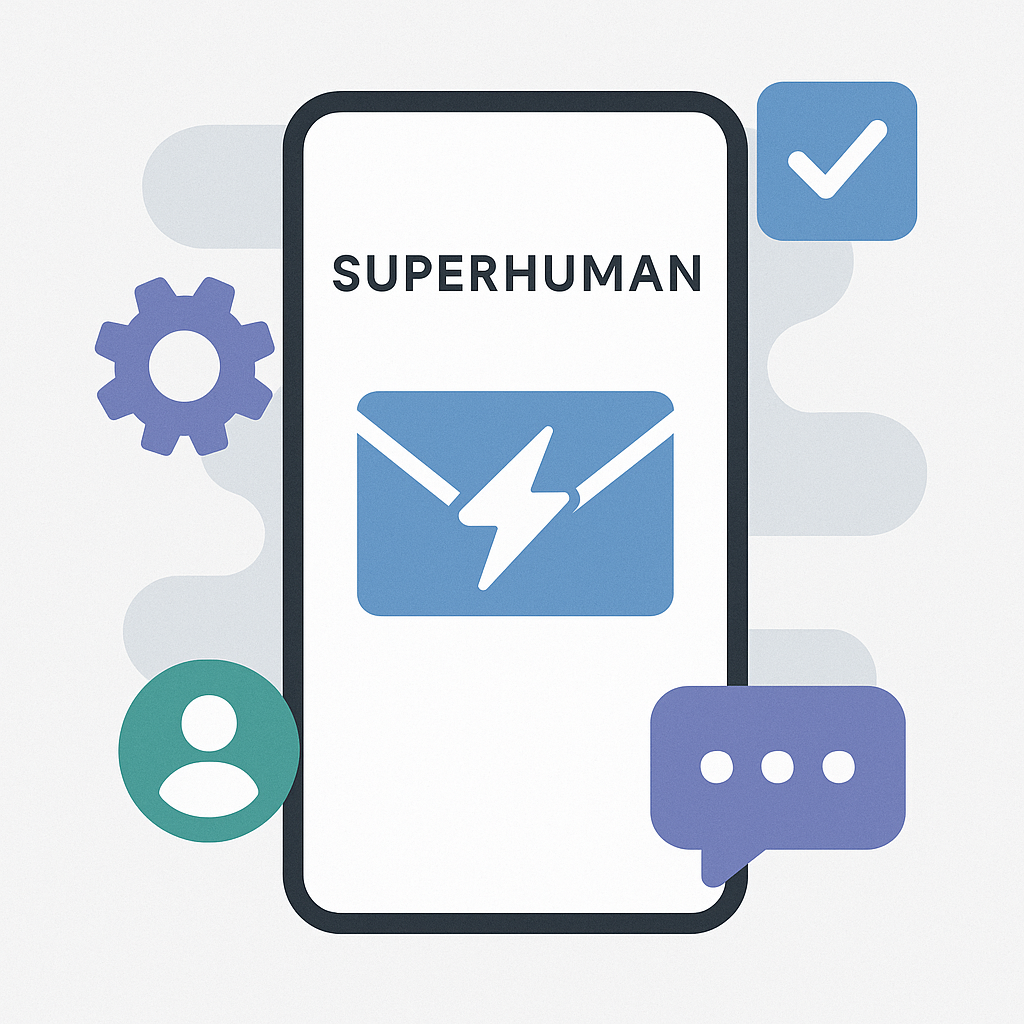Superhuman App: Boost Email Productivity with Competitor Insights

In today's fast-paced professional world, email remains a cornerstone of communication, yet it often becomes a major bottleneck for productivity. We're drowning in a sea of messages, struggling to keep our inboxes manageable, let alone efficient. Enter the superhuman app – a tool that has dramatically shifted perceptions of what's possible in email management. But what if you're not ready for a premium subscription or are looking for broader strategies? The answer lies in a powerful, often overlooked approach: competitor intelligence. By dissecting what makes tools like Superhuman so effective, we can uncover invaluable insights and **productivity hacks** to transform our own email workflows.
Understanding Competitor Intelligence in Email Management
In any competitive market, understanding your rivals is crucial for success. This principle extends beyond product development and marketing into the realm of personal productivity. When we talk about competitor intelligence in the context of email, we’re not just looking at features; we're examining the underlying philosophies and user experience design that drive efficiency. Tools like Superhuman, which gained rapid traction by focusing on speed and a streamlined workflow, serve as benchmarks. Analyzing these **competitor analysis tools** and their successful implementations allows us to identify best practices that we can adapt, regardless of the specific software we use.
Why is this approach so effective? Because successful products often solve common pain points in innovative ways. For email, these pain points typically include:
- Inbox Overload: An overwhelming volume of emails leading to missed messages and increased stress.
- Time Wastage: Spending excessive time reading, sorting, replying, and managing emails.
- Distraction: Constant notifications disrupting focus and deep work.
- Inefficient Workflows: Clunky interfaces and slow processes that hinder rapid decision-making.
By studying how others tackle these issues, particularly a tool as focused as the superhuman app, we can gain actionable insights without necessarily adopting their exact solution. This is about extracting the essence of their success and applying it to our own context, whether that's using Gmail, Outlook, or another **email management software**.
Key Productivity Features of Superhuman to Analyze
Superhuman has built its reputation on a foundation of speed, simplicity, and user-centric design. While it comes with a premium price tag, its core features offer a masterclass in efficient email handling. Let’s break down what makes it stand out:
1. Speed and Keyboard-Centric Navigation:
- The Command Bar: Superhuman’s signature feature is its command bar, accessible via keyboard shortcuts (often Cmd+K). This allows users to perform almost any action – search, archive, snooze, send, compose – without touching their mouse. This drastically reduces context switching and increases speed.
- Fast Triage: Emails are presented one by one, encouraging quick decisions: Answer, Archive, Delete, or Snooze. This gamified approach encourages rapid processing and helps achieve inbox zero strategies more effectively.
2. Focused Workflow and Minimalist Interface:
- Reduced Clutter: The interface is intentionally sparse, removing unnecessary buttons, menus, and visual noise. This design choice helps users concentrate on the content of the email itself.
- Snooze Functionality: The ability to "snooze" emails and have them reappear at a more convenient time is a powerful tool for managing workflow and preventing urgent tasks from being buried.
- Smart Folders and Filters: While minimalist, Superhuman offers intelligent organization, allowing users to quickly sort and find emails without complex manual folder management.
3. Enhanced Communication Features:
- Read Status and Tracking: Knowing when emails have been read can inform follow-up strategies, though this feature needs careful ethical consideration.
- Scheduled Send and Reminders: Ensuring emails are sent at optimal times and setting reminders for follow-ups are integrated seamlessly.
- Live Email Sharing: The ability to share a live, updated view of an email thread with colleagues is a unique collaboration feature, streamlining communication about specific messages. (Source: Superhuman.com)
4. Integration and Extensibility:
- Calendar Integration: Seamlessly scheduling meetings directly from emails.
- CRM Integration: Connecting email activity with customer relationship management systems.
Analyzing these elements reveals a clear philosophy: make email fast, focused, and integrated into a broader productivity ecosystem. For professionals seeking to boost their **email efficiency**, these are the core principles worth dissecting.
Learning from Superhuman: Strategies for Faster Email Processing
The true value of looking at the superhuman app lies not just in identifying its features, but in translating them into actionable strategies for your own workflow. Here’s how you can adapt these principles:
1. Master Your Existing Client's Keyboard Shortcuts:
- Most email clients, including Gmail and Outlook, offer extensive keyboard shortcut customization. Take an hour to learn the shortcuts for common actions like archiving, replying, forwarding, composing, and searching. This is a fundamental **productivity hack** that can save significant time daily. For instance, in Gmail, 'A' to reply, 'R' to reply all, 'F' to forward, and 'e' to archive are game-changers.
- If you use an iPhone, optimizing your email experience is key. Understanding the best email app for iPhone can also involve exploring built-in shortcuts and swipe gestures to speed up common tasks.
2. Implement Strict Triage Rules (The "Inbox Zero" Mindset):
- Adopt a system for processing emails rapidly. For each email you open, decide immediately:
- Do: Respond now (if it takes less than 2 minutes).
- Delegate: Forward it to the appropriate person.
- Defer: Snooze it or add it to a to-do list for later processing.
- Delete/Archive: If no action is needed.
- This disciplined approach is central to most effective inbox zero strategies. The goal is to touch each email as few times as possible and clear your inbox regularly.
3. Leverage Snooze and Reminders Effectively:
- If your current email client doesn't have a robust snooze feature, explore add-ons or integrate with task management tools. Setting a specific time for an email to reappear ensures it doesn’t get lost and prompts action when you’re better equipped to handle it. This is a powerful way to declutter your active inbox while ensuring nothing falls through the cracks.
4. Batch Processing and Time Blocking:
- Instead of reacting to every incoming email, dedicate specific blocks of time to processing your inbox. Turn off notifications during focus periods. This allows for deeper work and reduces the cognitive load associated with constant interruptions. Processing emails in batches (e.g., twice a day) can significantly improve concentration and overall efficiency.
5. Minimize Visual Distractions:
- If possible, simplify your email client's interface. Unsubscribe from newsletters you don't read, disable unnecessary sidebars or promotional banners, and focus on the core message. A cleaner visual field leads to a calmer, more productive mind.
By applying these strategies, you can inject Superhuman-like efficiency into your existing email setup, proving that significant improvements don't always require a new tool, but rather a new approach.
Adapting Superhuman's Principles to Your Email Workflow
You don't need to adopt the superhuman app to benefit from its core productivity principles. The key is to adapt the *mindset* and *strategies* to your current tools and habits. Here’s how:
1. For Gmail Users:
- Keyboard Shortcuts: Enable them in your Gmail settings (Settings > See all settings > Keyboard shortcuts).
- Canned Responses/Templates: For frequently sent replies, use the "Templates" feature to save time.
- Filters and Labels: Set up robust filters to automatically label, archive, or even star incoming emails. This mimics Superhuman's smart organization.
- Snooze Functionality: Gmail has a built-in snooze feature that’s incredibly useful for deferring emails.
- Inbox Tabs: Utilize Gmail's tabbed inbox (Primary, Social, Promotions, Updates) to categorize incoming mail and focus on the most important ones first.
2. For Outlook Users:
- Quick Steps: Create custom Quick Steps to combine multiple actions (e.g., move to a folder and mark as read) with a single click or keyboard shortcut.
- Rules: Set up powerful rules to manage incoming mail, similar to Gmail filters.
- Focused Inbox: Enable Focused Inbox to separate important emails from others.
- Snooze Email: Outlook also offers a snooze feature, allowing you to schedule emails to reappear later.
- Keyboard Navigation: Learn Outlook’s keyboard shortcuts for faster navigation and actions.
3. For Remote Workers and Entrepreneurs:
- Virtual Assistant Services: Consider leveraging virtual assistant services that can help manage your inbox, schedule meetings, and filter communications, freeing you up for strategic tasks.
- Task Management Integration: Link your email to your task management system (e.g., Asana, Todoist). If an email requires a task, create the task directly and archive the email.
4. For Sales Teams:
- CRM Integration: Ensure your email client integrates with your CRM. This allows for quick logging of communications and provides context for sales outreach.
- Follow-up Systems: Implement a strict follow-up protocol. Use reminders or task management to ensure no lead or client query is missed. This is where understanding **AI email assistant** capabilities can be particularly beneficial for automated follow-ups and sentiment analysis.
The core takeaway is to be deliberate about your email habits. Identify your biggest time sinks and explore features within your current tools that can mitigate them. This proactive approach is key to achieving sustainable **email efficiency**.
Beyond Superhuman: Identifying Other Leading Email Productivity Tools
While the superhuman app is a prominent example, the landscape of efficient **email management software** is rich with innovation. Understanding alternatives can provide a broader perspective on what features are most impactful for boosting **email efficiency**.
- Mailman: Positioned as a more affordable and accessible alternative, Mailman focuses on batching emails, "quieting" the inbox, and providing scheduled digests. It acts as an email firewall, helping users regain control over their inbox. (Source: Mailmanhq.com)
- Canary Mail: Known for its privacy-focused features and clean interface, Canary Mail also offers smart sorting, templates, and a focus on speed, making it a strong contender for those seeking a blend of security and efficiency. (Source: Canary Mail)
- Spark Mail: Spark offers a unified inbox experience, smart sorting (like "Smart Inbox"), shared inboxes for teams, and integrated calendar features. It aims to streamline communication for individuals and collaborative teams.
- Newton Mail: Though its future has seen changes, Newton was historically praised for its clean design, cross-platform sync, and integration with various productivity services. Its focus was on providing a simple, fast, and distraction-free email experience.
Exploring these tools, alongside Superhuman, helps identify common themes: speed, minimal interfaces, intelligent sorting, and robust integration. This competitive analysis confirms that efficiency in email management is a sought-after feature across the market, driving innovation in **AI productivity platforms**.
How MailToPie Integrates AI for Enhanced Email Efficiency
The evolution of email management is heavily influenced by artificial intelligence. As we look at how tools like Superhuman optimize workflows, it's also essential to consider the growing capabilities of AI-powered solutions. Tools like an ai executive assistant can help streamline your workflow, automate repetitive tasks, and provide intelligent insights into your communication habits, significantly boosting your overall **email efficiency**. These **AI productivity platforms** are designed to tackle inbox overload head-on, offering features that complement or even surpass traditional **email management software**.
An **AI email assistant** can:
- Prioritize Emails: AI algorithms can learn to identify and surface your most important emails, ensuring you focus on high-impact communications first.
- Draft Responses: Many AI assistants can help draft replies based on context, saving significant typing time.
- Summarize Long Threads: For lengthy email chains, AI can provide concise summaries, allowing you to grasp the key points quickly.
- Schedule Meetings: AI can parse emails for meeting requests and help coordinate schedules, reducing back-and-forth communication.
- Automate Follow-ups: For sales or project management, AI can be programmed to send follow-up reminders or messages based on predefined triggers.
By integrating AI, email management moves beyond simple organization and speed to become more intelligent and proactive. This aligns perfectly with the goal of achieving peak productivity, making your inbox work *for* you, rather than against you.
Conclusion: Future-Proofing Your Inbox with Competitor Insights
The journey to mastering your inbox is ongoing, and competitor analysis, particularly of trailblazers like the superhuman app, offers a powerful roadmap. By dissecting their focus on speed, minimalist design, and intuitive workflows, we can identify actionable **productivity hacks** applicable to any email platform. Whether it’s mastering keyboard shortcuts, implementing strict triage rules, or leveraging snooze features, these strategies can dramatically enhance your **email efficiency**.
Remember, the goal isn't necessarily to replicate a competitor's tool but to extract the principles that drive their success and adapt them to your unique needs and existing **email management software**. Furthermore, the integration of AI, as seen in advanced solutions like an ai executive assistant, represents the next frontier in email productivity. These **AI productivity platforms** are poised to further automate, optimize, and intelligentize our communication habits.
By staying informed about industry trends, analyzing what makes leading tools effective, and embracing intelligent automation, you can future-proof your inbox and achieve unprecedented levels of professional productivity. Start by choosing one or two strategies discussed today and commit to implementing them consistently. Your future, more efficient self will thank you.
```


